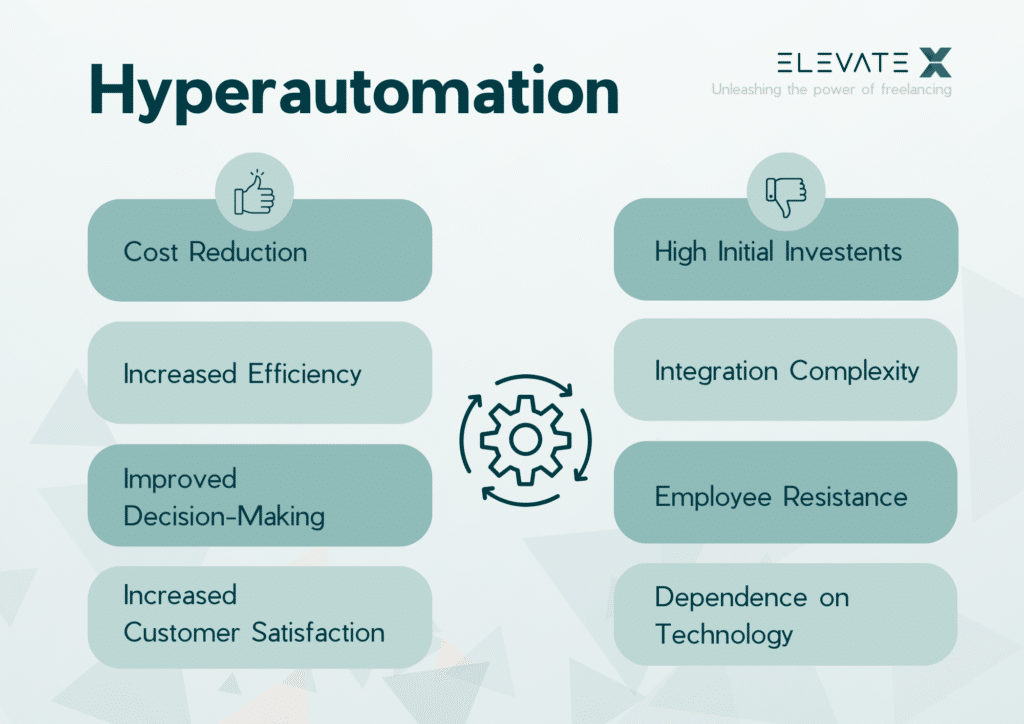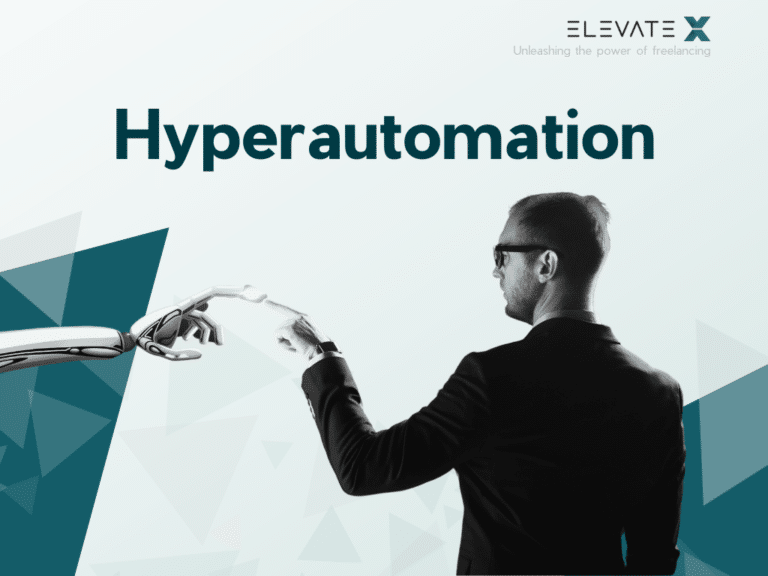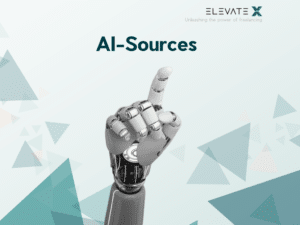Hyperautomation marks a turning point in the business world by integrating advanced technologies such as AI, machine learning, and Robotic Process Automation (RPA). This concept expands traditional automation by optimizing complex processes and improving decision-making. This article provides a comprehensive overview of hyperautomation, its applications, and the associated advantages and disadvantages.
What Is Hyperautomation?
Hyperautomation, a key term in modern business technology, represents the expansion of traditional automation through the use of advanced technologies. This concept goes beyond simple process automation and includes the integration of Robotic Process Automation (RPA), Artificial Intelligence (AI), machine learning, and other technologies to optimize complex business processes. It enables companies to automate not only simple, repetitive tasks but also complex, decision-intensive processes. Hyperautomation aims to automate everything that is technically automatable, combining various technologies and tools for comprehensive, efficient automation. This leads to improved business performance, increased efficiency, and cost savings.
KEY POINTS
- Hyperautomation combines AI and RPA to optimize and automate business processes.
- It improves decision-making and increases efficiency through the use of technologies such as Machine Learning and Process Mining.
- Hyperautomation revolutionizes areas such as customer service and data processing by automating repetitive tasks.
How Does Hyperautomation Work?
Hyperautomation works by cleverly linking various technologies to achieve comprehensive automation and optimization of business processes. These technologies work together to automate not only simple, repetitive tasks but also more complex processes and decision-making:
RPA
This technology uses bots to automate repetitive and manual tasks. It acts as a digital workforce, taking over simple tasks such as data entry or report generation.
Machine Learning/AI
Artificial Intelligence and Machine Learning enable systems to learn from data, recognize patterns, and make decisions. This is crucial for automating more complex tasks.
Process Mining
Process mining analyzes data from various business processes to visualize and optimize them. It identifies inefficiencies and potential improvements, which are essential for successful hyperautomation.
Intelligent Business Process Management Suites (iBPMS)
iBPMS combine process management with analytical capabilities, allowing for a more dynamic design and monitoring of business processes.
These technologies together form the backbone of hyperautomation, enabling deeper and broader automation that goes beyond traditional methods.
Where Is Hyperautomation Used?
Hyperautomation, a combination of advanced technologies such as Artificial Intelligence, Machine Learning, and Robotic Process Automation (RPA), is revolutionizing a variety of industries and business areas. This transformative approach enables organizations to optimize internal processes that are usually carried out manually, thereby making them significantly more efficient.
Data Processing
A key area of application is the automation of data entry and processing. Particularly in healthcare, RPA and OCR technologies can be used to extract patient data from medical records and convert it into machine-readable texts, saving time and increasing accuracy.
Customer Service
The use of chatbots and virtual assistants powered by NLP and Machine Learning algorithms has revolutionized customer service. These technologies enable companies to offer efficient support around the clock and handle a variety of inquiries.
IT Operations and Management
Hyperautomation improves IT operations through the use of AI and Machine Learning, especially in automated monitoring and routine tasks, leading to optimized system performance and increased efficiency.
Financial Processes
In finance, Hyperautomation helps optimize tasks such as invoice processing, expense management, and payment reconciliation, increasing efficiency and accuracy and leading to improved decision-making processes.
Supply Chain Management
Hyperautomation enables the automation and optimization of workflows such as order processing, inventory management, and demand forecasting, leading to cost savings and higher customer satisfaction.
HR and Employee Management
In Human Resources, Hyperautomation enables the automation of various tasks, from candidate selection to payroll processing, leading to increased efficiency and an improved employee experience.
Compliance and Risk Management
Through the use of Hyperautomation, companies can automate compliance monitoring, identify potential risks and proactively address them, improving regulatory compliance and reducing financial risk and data security.
Sales and Marketing
Hyperautomation plays a crucial role in automating and optimizing sales and marketing processes through technologies like CRM systems, AI, and ML, leading to improved customer engagement and revenue growth.
Data Analysis and Insights
Hyperautomation simplifies data entry, reduces manual errors, and improves the efficiency of document processing in any industry that needs it. It is particularly effective in automating the collection of data from physical or digital documents and processing unstructured data.
Overall, Hyperautomation enables organizations to remain competitive in an increasingly digital world by automating repetitive tasks, streamlining processes, and using intelligent algorithms to create exceptional value for customers. Where automation makes most sense can best be determined with an IT consultant.
Find Automation Experts Now!
Advantages of Hyperautomation
Increased Efficiency
Hyperautomation speeds up business processes, leading to improved corporate performance. It not only automates routine tasks but also optimizes complex processes.
Cost Reduction
By automating manual tasks, companies can significantly reduce their costs. The leading consulting and analytics firm Gartner therefore predicts that companies can reduce their operating costs by 30 percent when they combine and holistically use current technologies.
Improved Decision-Making
Through the use of AI and Machine Learning, Hyperautomation enables deeper insights into data and improves analysis capabilities and decision-making.
Increased Customer Satisfaction
Automating customer service processes increases efficiency and availability, leading to higher customer satisfaction.
Disadvantages of Hyperautomation
High Initial Investments
Implementing Hyperautomation requires a significant financial investment in technology and training.
Complexity in Integration
Integrating various automation tools can be complex and requires a high level of technical expertise.
Employee Resistance
Employees might feel threatened by the use of Hyperautomation in their jobs, which can lead to resistance.
Dependence on Technology
A strong dependence on automated systems carries risks, especially in the event of technical failures or cyber attacks.

Conclusion
Hyperautomation is a powerful tool in the modern business world that helps companies become more agile, efficient, and competitive. Despite the challenges that its implementation may bring, it offers significant long-term benefits.
Hyperautomation is the advanced automation of business processes through the combination of RPA, AI, Process Mining, and iBPMS.
It uses technologies such as RPA, AI, Process Mining, and iBPMS to automate and optimize repetitive and complex processes.
By integrating various technologies into existing business processes, supported by data-driven analysis and decision-making.








